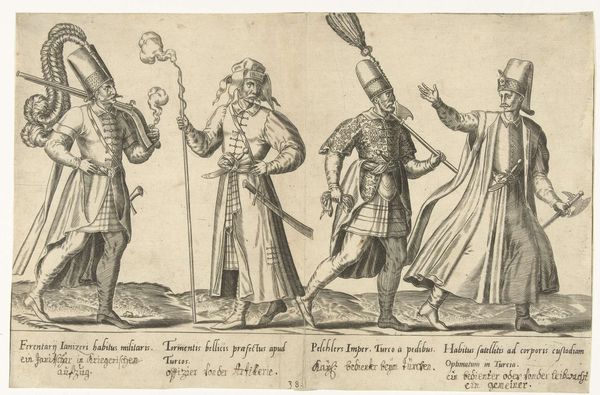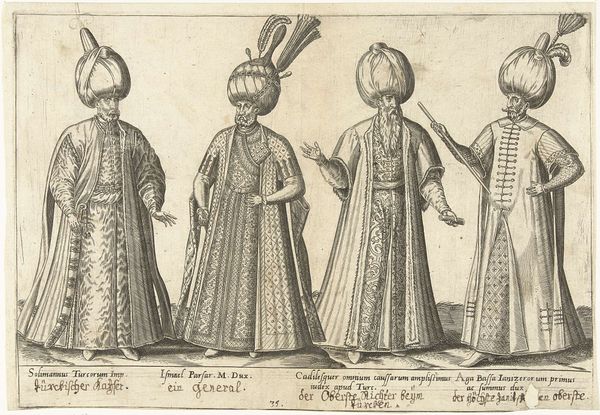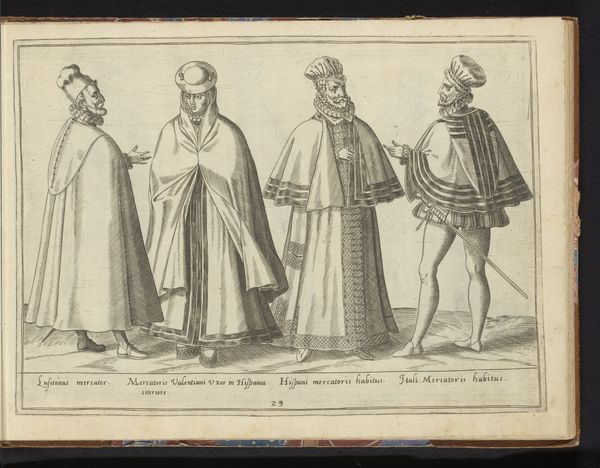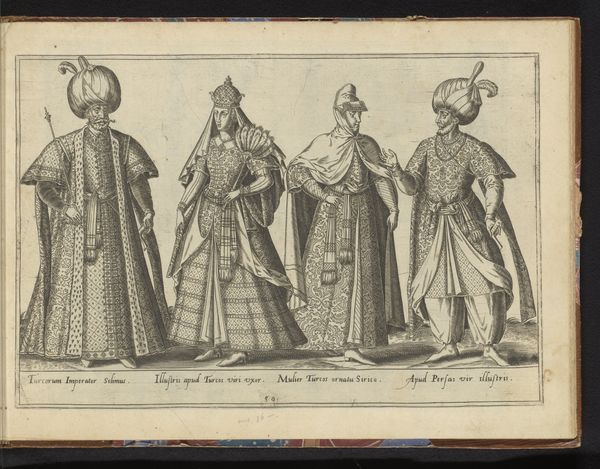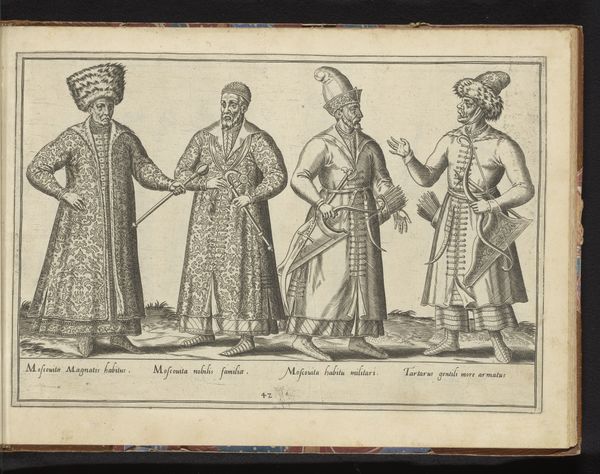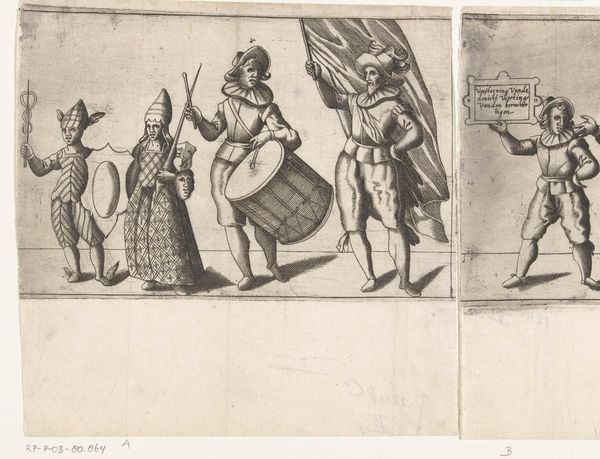
drawing, print, ink, engraving
#
portrait
#
drawing
# print
#
pen sketch
#
asian-art
#
11_renaissance
#
ink
#
pen-ink sketch
#
history-painting
#
engraving
Dimensions: height 211 mm, width 286 mm
Copyright: Rijks Museum: Open Domain
Abraham de Bruyn made this print, "Clothing of Ottoman Soldiers around 1580", using engraving, a printmaking technique that was crucial to circulating images and information at that time. Engraving involves incising lines into a metal plate, applying ink, and then transferring the image onto paper. Here, de Bruyn meticulously captures the textures and patterns of the soldiers' garments, using the lines to describe the luxurious fabrics. The material of the clothing speaks volumes about the social context. Intricate patterns, embellishments, and headpieces denote rank and status. Consider the labor involved in producing such detailed work, from the weaving of the cloth to the crafting of the weaponry. These garments symbolize power and wealth. The print, therefore, is not just a visual record; it's a document of class, labor, and the economics of image-making, prompting us to consider the social and political dimensions embedded within its lines.
Comments
No comments
Be the first to comment and join the conversation on the ultimate creative platform.
